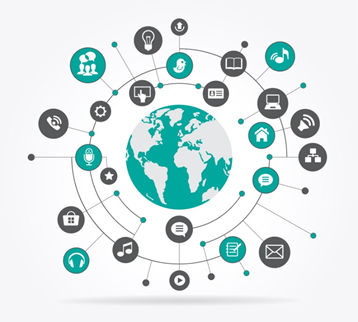Industry 4.0 – IOT for disability
Research article  Open access |
Available online on: 25 August, 2019 |
Last update: 24 March, 2022
Open access |
Available online on: 25 August, 2019 |
Last update: 24 March, 2022
Mada Center works with its various partners and innovators to develop an ecosystem that is supportive of innovating technological solutions that promote digital access for PWDs and the elderly. That trend is compatible with the goals of Industry 4.0, that is generally attributed to as the fourth industrial revolution and is set to alter the life, work and usability fundamentally, and its implementation will mean radically changing the existing tools, information framework and business processes of the entire operation.
 Industry 4.0 sees the foundation of disruptive cutting-edge technologies, the current courses of automation and data transfer that is starting to occur in manufacturing technologies. This covers Cyber-physical System, Internet of Things (IoT), Data Analysis, Cloud computing systems, Cognitive Computing, 3D printing and Artificial Intelligence (AI).
Industry 4.0 sees the foundation of disruptive cutting-edge technologies, the current courses of automation and data transfer that is starting to occur in manufacturing technologies. This covers Cyber-physical System, Internet of Things (IoT), Data Analysis, Cloud computing systems, Cognitive Computing, 3D printing and Artificial Intelligence (AI).
The Internet of Things (IoT) was always known for its unique properties, the enabling of advanced services by interconnecting both physical and virtual things based on existing and evolving interoperable information and communication technologies. However, there is no denying that the importance of technical underpinnings of IoT is that it is less about the technical and more about how it impacts the life of the users regardless of their ability level.
As IoT continues to grow in its consumer acceptance, for people with disabilities IoT offers far more than its parts. Much of the potential power of IoT for people with disabilities is in its always-on, real-time connectivity, which can ensure that people can quickly and easily obtain assistance and support. Although the potential benefits of connected things are limitless, the primary application IOT for people with functional limitations are:
– Mobility: The development of the self-driving car, with thousands of different sensors reporting millions of times only on a short journey. It will offer those with disabilities an incredible level of mobility like never before.
– Home automation: Wireless Home Automation system using IoT creates a system that applies computers or mobile devices to establish a vital connection with the home functions and features automatically through internet from anywhere around the world. Such automated homes give access to the elderly and people with functional limitations to control the home units by voice command or on one touch at ease.
– Monitoring: The use of IoT devices to monitor hundreds of people in the healthcare sector. The idea of this is to accumulate millions of different data points that may hold a hint to identifying and resolving the illness. Such mode of data collection can be used not only for those suffering from diseases with potential cures but for helping people with disability via sensors in prosthetics that could identify the means that people are using them and develop innovative models which will cater them to the best. It could also distinguish how people move about their home and which factors could be altered to make it more convenient.
– Communication: IoT encourages communication between devices. Because of this, the physical devices can stay connected and hence the total transparency is available with lesser inefficiencies and more exceptional quality.
IoT devices and services enable people with disabilities to engage more fully and autonomously in daily life by overcoming some needs for human agents or accommodations. In addition to the potential advantages of IoT devices and assistance for people with functional limitations, unique privacy risks and objections are raised by the collection, use, and distribution of user data.
